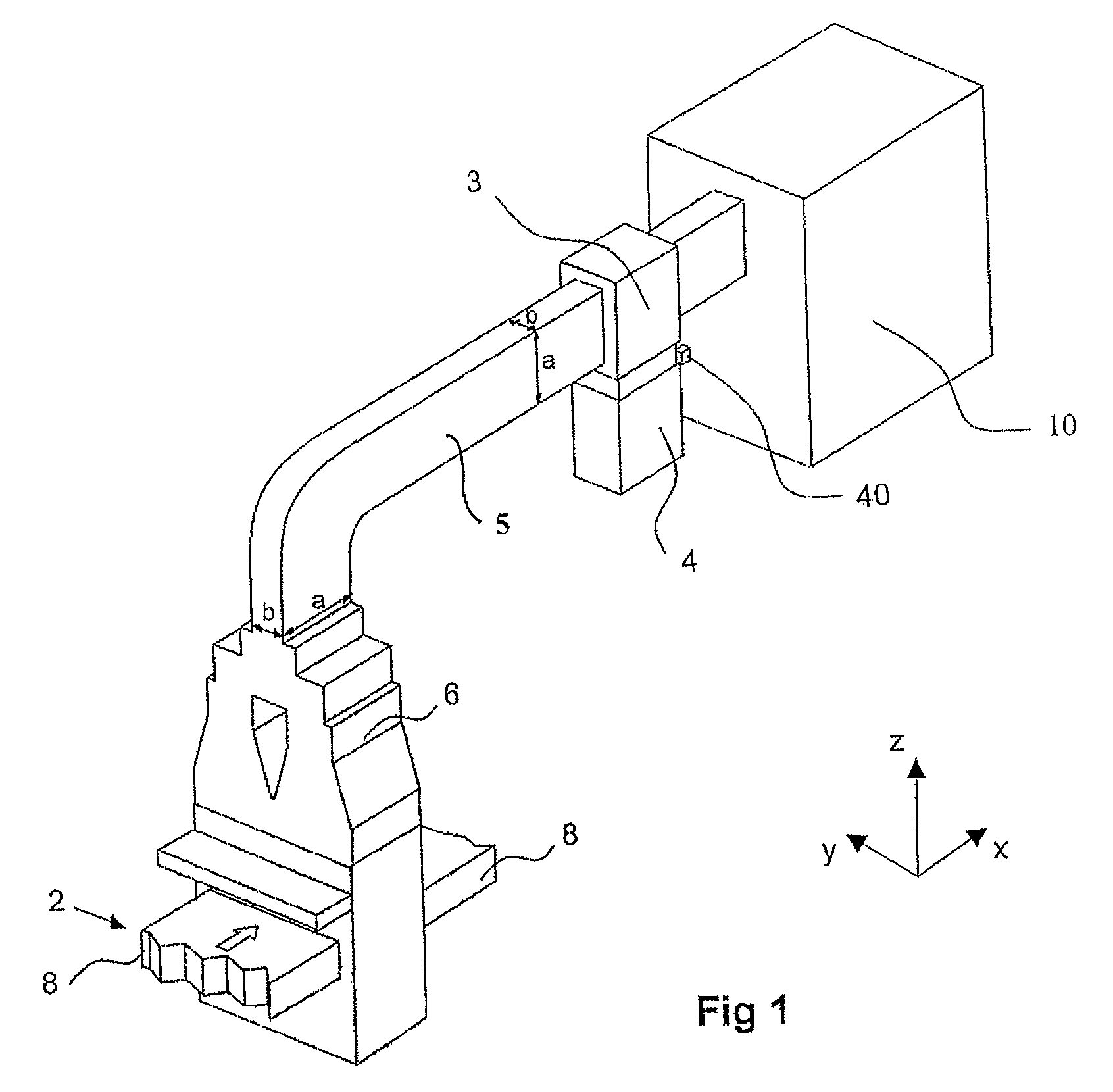Apparatus for microwave heating of a planar product including a multi-segment waveguide element
a technology of multi-segment waveguides and apparatus, which is applied in the direction of waveguides, electric/magnetic/electromagnetic heating, impedence networks, etc., can solve the problems of achieve the effect of alleviating the interference effect, uniform heating patterns, and degrading the uniform distribution of electric fields
- Summary
- Abstract
- Description
- Claims
- Application Information
AI Technical Summary
Benefits of technology
Problems solved by technology
Method used
Image
Examples
Embodiment Construction
[0027]The present invention relates generally to an apparatus for heating a planar product, particularly a wooden board, panel or veneer product containing glued wood, primarily for affecting the hardening reactions of the glue, by applying the heating power to the planar product by means of an alternating electrical field at a microwave frequency. Before the heating step, the board product has been manufactured to be continuous, and it is conveyed through a stationary heating apparatus. The board product generally comprises wood layers arranged parallel to the board, ply layers with intermediate layers of glue to be hardened by means of heat. A typical product is the so-called LVL beam (Laminated Veneer Lumber). The invention is applicable to any types of wood based board products, in which the glued wood component is bound to a solid board construction by hardening the glue. Before being transported to heating, the board product may usually be exposed to pressure in order to get t...
PUM
 Login to View More
Login to View More Abstract
Description
Claims
Application Information
 Login to View More
Login to View More - R&D
- Intellectual Property
- Life Sciences
- Materials
- Tech Scout
- Unparalleled Data Quality
- Higher Quality Content
- 60% Fewer Hallucinations
Browse by: Latest US Patents, China's latest patents, Technical Efficacy Thesaurus, Application Domain, Technology Topic, Popular Technical Reports.
© 2025 PatSnap. All rights reserved.Legal|Privacy policy|Modern Slavery Act Transparency Statement|Sitemap|About US| Contact US: help@patsnap.com



